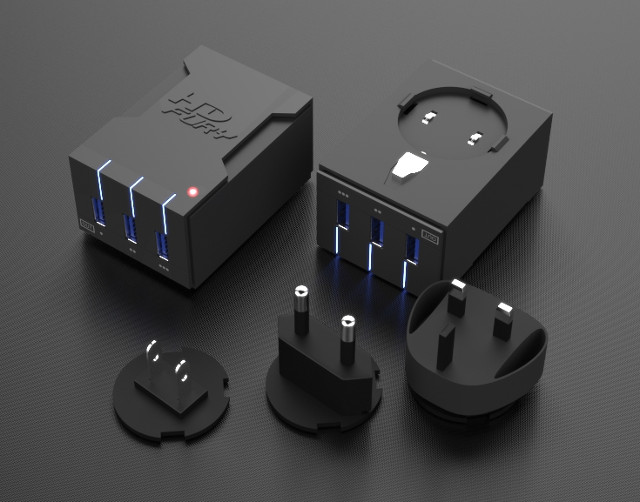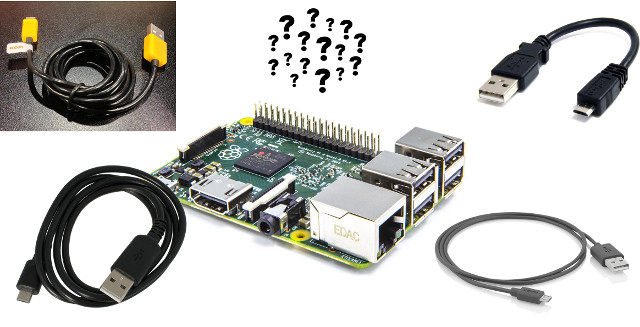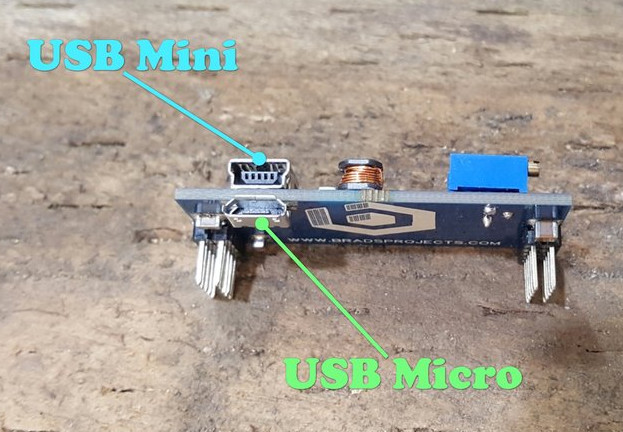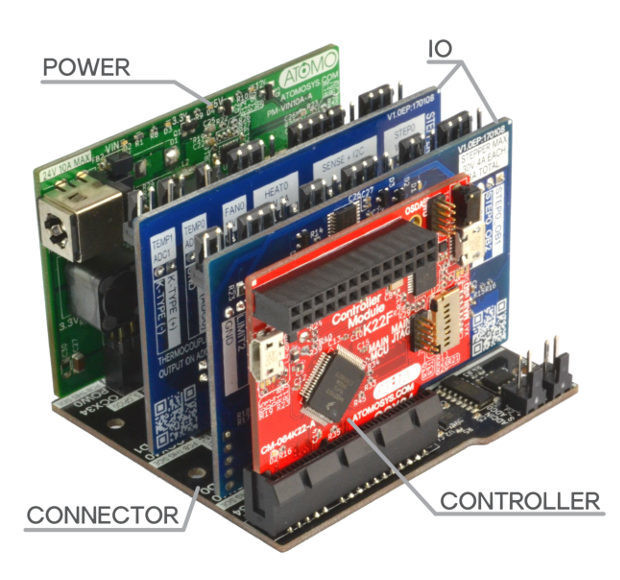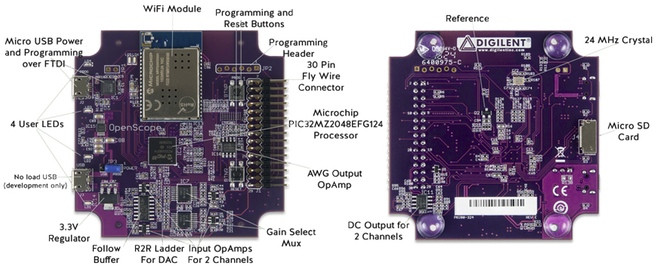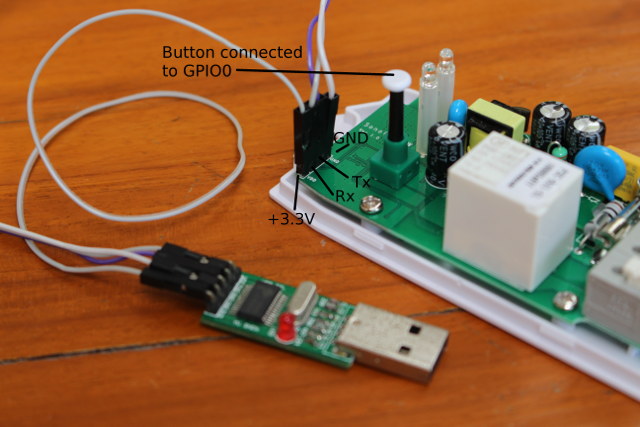Google has been working on supporting Android apps and the Play Store on Chromebooks, which are normally sold with either ARM or Intel processors. So the ability to run Android apps well is one of the things to consider before purchasing a Chromebook. Shrout Research has published a paper entitled “Chromebook Platform Choice Important for Android App Performance” comparing an Acer Chromebook R13 with a Mediatek MT8173C ARM Cortex A72/A53 processor to Acer Chromebook R11 with an Intel Celeron N3060. The Intel Chromebook has a smaller resolution so this could be an advantage, so less resources are needed to update the display. However, the ARM processor is significantly more powerful than the Intel one according to GeekBench results, and Chromebook R13 is sold for $399 on Amazon US, while Chromebook R11 goes for $299 (and lower during promotions). So it’s not a perfect comparison, but it should give an idea […]
$59 HDFury Universal PSU Doctor Supports Power Monitoring via iOS or Android
We’ve recently covered Cambrionix PowerPad 15S, a high-end 16-port USB hub that can deliver 5V/2.1A on each port, integrates power monitoring function, and an API to control and monitor each port individually. That’s a very cool device, but it’s also expensive at around $600, and even the cheaper PowerPad 15C without data pins, come at $200. If you don’t need the complete set of features offered by Cambrionix devices, but you’ll like to get a reliable multi-port USB charger with power monitoring function, HDFury Universal PSU Doctor could be an interesting option. HDFury Universal PSU Doctor specifications: MCU – Renesas RL78 16-bit MCU USB – 3x USB ports with 2x 5V ports up to 5V/2.14A, 1x USB QC 2.0 port supporting 5V/2.14A, 9V/1.6A or 12V/1.2A output ADC – Up to 11 channels, 10-bit resolution for power monitoring Sensor – n-chip temperature sensor Power Supply Built-in 100 ~ 240V AC with […]
Selecting a Micro USB Cable to Power Development Boards or Charge Phones
Yesterday one person contacted me on Facebook asking me whether there was any chance of me doing a “which usd-micro usb cable is best”, as there’s not much clear information on the Internet. His purpose was to charge his phone, but many development boards come with a micro USB port, and I’ve read many comments about powering the board. It also happened to me, and the main cause can either be the power supply which does not work as rated (usually 5V/2A), or the micro USB cable which may have a resistance a little to high leading to voltage drops. You’ll know you may have a power problem when the board refuses to boot, and usually boot loop, or randomly reboots especially under high load. The first solution is to get a power supply that provide the right voltage and amperage, and you can test that with USB Charger doctor […]
Toaster Breadboard Power Supply Supports 3.3V, 5V, and Variable 5V to 16 V Outputs
YwRobot MB102 is a popular power supply for breadboards delivering 5V or 3.3V to both power rails. Bradsprojects’ Toaster power supply offers similar functionalities but beside outputting just 5V or 3.3V, it also adds a 5V to 16V variable output, and takes 5V from its micro or mini USB port.Toaster board specifications: Input Voltage – 5V via USB Mini and USB Micro port Input Current (max) – 1Amp Output Voltage 1 – 3.3 Volts Output Voltage 2 – 5 Volts Output Voltage 3 – Variable 5 Volts to 16 Volts with potentiometer Protection – 1.1Amp Resettable Fuse Output Connection – Standard Dual Rail Breadboard 2.54mm spacing. Dimensions – 50mm x 25mm You just need a screwdriver and a multimeter to adjust the variable output to your requirement.The Toaster board can be purchased on Tindie for $10 + shipping. Jean-Luc Aufranc (CNXSoft)Jean-Luc started CNX Software in 2010 as a part-time endeavor, […]
Atomo is a Raspberry Pi Compatible Modular Electronics Prototyping System (Crowdfunding)
Atomo is a modular electronics protyping system comprised of four elements: Control, I/O, Power, and Connector, with the PCBs for each category color-coded with respectively red, blue, green, and black. The connector board connects power, I/O and control(ler) boards together in a way that’s supposed to be neater than most hand made prototypes. The whole ecosystem includes 15 different boards: Controllers with 26-pin Raspberry Pi compatible header 2 IO Module Controller (CM-M2K22-A) based on NXP Kinetis K22F MCU 4 IO Module Controller (CM-M4K64-A) based on NXP Kinetis K64F MCU 8 IO Module Controller (CM-M8K64-A) based on NXP Kinetis K64F MCU Connectors 8 IO Module Connector (GM_M8P2_A) – Dim: 145mm x 100mm; power up to 40V @ 64A 4 IO Module Connector (GM_M4P1_A) – Dim: 71mm x 100mm; power up to 40V @ 32A 2 IO Module Connector (GM_M2P1_A) – Dim: 71mm x 65mm; power up to 40V @ 16A 2 IO Module Low-Power Connector […]
$79 Digilent OpenScope Open Source Multi-function Programmable Instrument Works over USB and WiFi (Crowdfunding)
Digilent OpenScope is an open source, portable, multi-function programmable instrument used for capturing, visualizing, and controlling analog and digital signals, that works with your smartphone or computer over USB or WiFi, and it can also be used in standalone mode as a development board, like you would use an Arduino or Raspberry Pi board. OpenScope MZ key features and specifications: MCU – Microchip PIC32 MZ (MZ2048EFG124) MIPS Warrior M-class micro-controller @ up to 200 MHz with 2048KB flash, 512 KB RAM External Storage – micro SD slot Wireless Connectivity – WiFi module USB – 1x micro USB for power and programming over FTDI Programming / Debugging – micro USB port, programming header Expansion – 30-pin Fly Wire connector with: 2x scope channels with 12 bits @ 2 MHz bandwidth and up to 6.25MS/s sampling rate 1x function generator output with 1 MHz bandwidth and up to 10MS/s update rate 10x […]
Satechi USB Type-C Power Meter Measures up to 65 Watts
CHARGER Doctor is a popular USB power meter for USB 2.0 ports that can help you check whether your charger delivers the promised amperage, and if you are dealing with USB powered device you can easily measure the power drawn by that device. But we are now in 2017, and USB type C has become more and more popular, and can deliver higher voltages higher than 5V, as well as higher currents. So if you are looking for USB type C power meter, Satechi has you covered. Satechi USB-C power meter key features and specifications: Voltage Range – 4V-20V Current Range – 50mA-10W Max readable Power – 65W Indicates power over time (mAh) and current direction (e.g. charger to laptop, or laptop to phone). USB 3.1 data pass-through supported Dimensions – 6.3 x 2 x 0.8 mm Weight – 8.6 g Beside just measuring power usage, several blogs report this USB-C […]
How to Build and Flash ESPurna Open Source Firmware to Sonoff POW Wireless Switch
ITEAD Studio Sonoff family is comprised of various inexpensive ESP8266 WiFi power switch, and the company sent me two of their latest CE certified models with Sonoff TH16 + external temperature & humidity probe, and Sonoff POW to measure power consumption. I checked the hardware is the first part of the review, and used Sonoff TH16 to control a water pump with the stock firmware and Ewelink Android app in the second part. It works reasonably well, but it relies on the cloud, so if you lose your Internet connection or the service closed, you can’t control the relay manually anymore. Luckily, the UART pins are exposed on Sonoff switches so you can solder a 4-pin header and connect a USB to TTL to flash your own firmware. Please don’t connect Sonoff devices to the mains when programming them, it’s very dangerous, instead the USB to TTL board will power […]



